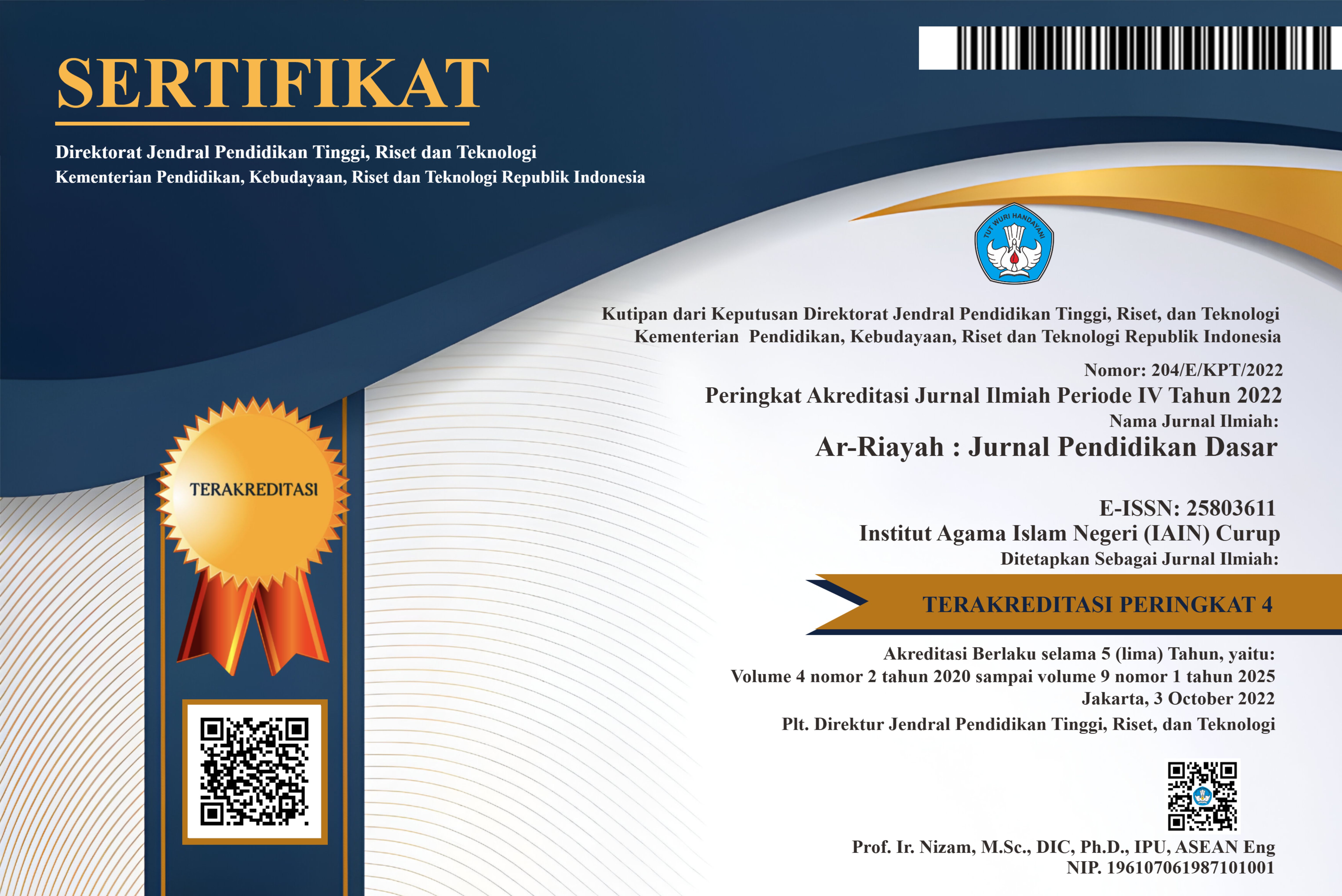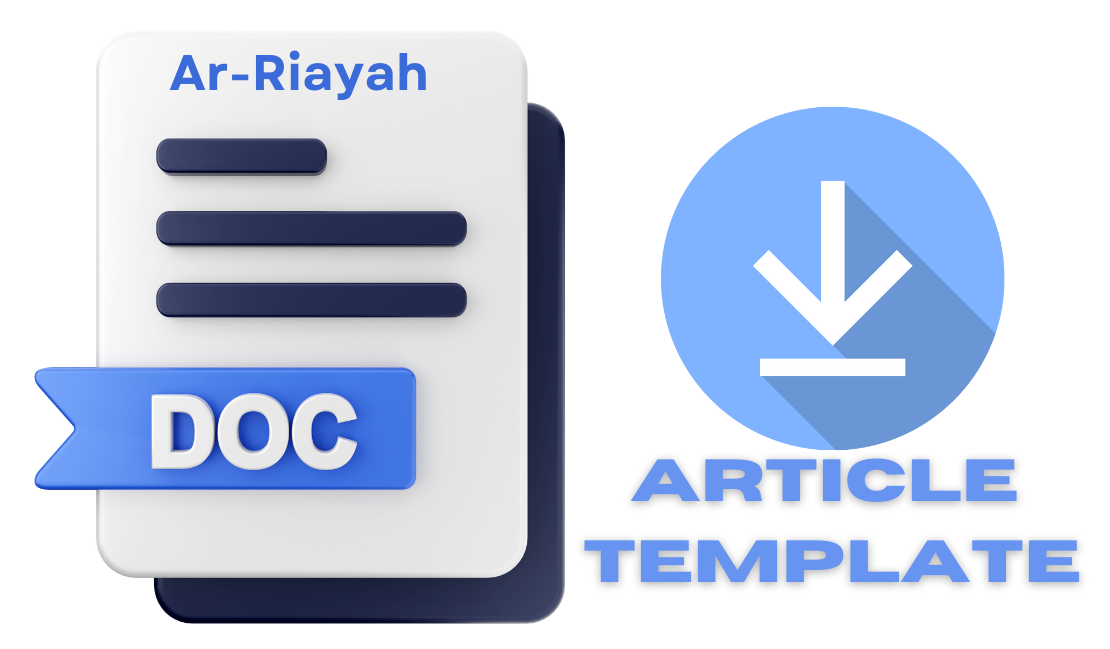Pembelajaran IPA Berbasis Pendidikan Karakter dengan Huruf Braille untuk Siswa Difable Netra
DOI:
https://doi.org/10.29240/jpd.v5i2.3345Keywords:
Learning Science, Character Education, Difable NetraAbstract
One of the goals of national education is the effort to form children's character. Without exception, children who have a good sense of sight, both of whom cannot function properly, are called blind people with disabilities and also need good character education as an effort to develop the potentials that exist within them optimally and optimally. Natural education science is one of the subjects that also requires the development of character education. The data collection method uses library research, with a qualitative approach and the data source is secondary data. Furthermore, the data analysis technique is by managing data (reduction), data display, and conclusions from the final results of data collection carried out. The results of this study obtained a clear explanation of: A. Character education, B. Characteristics of science studies, C. Science learning, D. Science learning objectives, E. Children with special needs, F. Braille, G. Implementation of education-based science learning Braille characters for blind students can be implemented in three stages, including: 1). Planning consists of formulating learning objectives, selecting and packaging materials by incorporating character education values into the lesson plans; 2). Implementation consists of science subjects and integration with other subjects; 3). Evaluation consists of assessment activities based on the application of character education values that are implemented on the attitudes and behavior of students with visual impairments in schools.
Downloads
References
“Azzet, Ahmad Muhaimin. 2011. Urgensi Pendidikan Karakter di Indonesia. Yogyakarta: Ar-Ruzz Media.â€
“Delpie, Bandi. 2006. Pembelajaran Anak Tunagrahita: Suatu Pengantar Dalam Pendidikan Inklusi, Bandung: Aditama.
Departemen Pendidikan dan Kebudayaan. 1975. Pedoman Tulisan Singkat Braille Indonesia. Jakarta: Direktorat Jendral Pendidikan Dasar dan Menengah Departemen Pendidikan Kebudayaan.â€
“Efendi, Mohammad. 2006. Pengantar Psikopedagogik Anak Berkelainan. Jakarta: Bumi Aksara.â€
“Gunawan, Ary. H. 2000. Sosiologi Pendidikan: Suatu Analisa Sosiologi Tentang Pelbagai Problem Pendidikan. Jakarta: Rineka Cipta.â€
Ishartiwi. 2008. Mengenali Penyandang Difabel netra dan Pendidikanya. Yogyakarta: UNY, tanggal akses 22 juli 2013.â€
Khamdun. 2015. “Media Pembelajaran IPA Berbasis Alam Untuk Siswa Tunanetra dala Pendidikan Karakter.†SEMINAR NASIONAL PENDIDIKAN SAINS Magister Pendidikan Sains dan Doktor Pendidikan IPA FKIP UNS. Surakarta, 19 November 2017
Kirschenbaum, H. 1995. “100 Ways to Enhance Values and Morality in School and Youth Settingsâ€. Boston: Allyn & Bacosn.
“Meldina, T., Melinedri, M., Agustin, A., & Harahap, S. 2020. “Integrasi
Pembelajaran IPS pada Kurikulum 2013 di Sekolah Dasar.†AR-RIAYAH: Jurnal Pendidikan Dasar.â€
Nawawi, Ahmad. 2009. “Pentingnya Orientasi dan Mobilitas bagi Difabel netra, Makalah Program Studi Pendidikan Kebutuhan Khusus (S2),†Bandung: Universitas Pendidikan Indonesia.
Trianto. 2007. “Wawasan Ilmu Alamiah Dasar (perspektif Islam dan Barat).†Jakarta: Prestasi Pustaka.
. 2007. “Model Pembelajaran Terpadu dalam Teori dan Praktikum.†Jakarta: Prestasi Pustaka.
Sahlan, Asmawa dan Angga P. Teguh. 2012. Desain Pembelajaran Berbasis Pendidikan Karakter. Yogyakarta: Ar-Ruzz Media.
“Smith, David J. 2009. Inklusi, Sekolah Ramah Untuk Semua. Bandung: Nuansa.
Somatri, Suljihati T. 2007. Psikologi Anak Luar Biasa, Bandung: Refika Aditama.
Suliyatno & MM, S. 2017. Metode Penelitian Kuantitatif. Jakarta: Rineka Cipta.
Sulistyorini, Sri. 2007. “Model Pembelajaran IPA Sekolah Dasar dan Penerapannya dalam KTSP.â€Yogyakarta: Tiara Wacana.
Sumarno, Dwijo dan Purwanto. 1986. Pedoman Menulis Braille. Yogyakarta: UNY.
Suyanto. 2011. “Pendidikan Karakter dalam Prespektif Teori dan Praktikâ€.Yogyakarta: UNY Press.
“Undang – Undang No. 1 tahun 2003 tentang Sistem Pendidikan Nasional, pada Bab I pasal 1. Undang-Undang Sistem Pendidikan Nasional, Yogyakarta: Pustaka Pelajarâ€
Widodo, Agus. 2011. “Pendidikan Karakter Strategi Membangun Karakter Bangsa Beradaban.†Yogyakarta: Pustaka Pelajar.
Zubaedi. 2004. “Pendidiikan Berbasis Masyarakat Upaya Menawarkan Solusi Terhadap Bergbagai Probllem Sosial.†Yogyakarta: Pustaka Pelajar.
Zuchdi, Darmayati. 2012. “Model Pendidiikan Karakter Terintegrasi dalam Pembelajaran dan Pengembangan Kultur Sekolah.†Yogyakarta: UNY Press.
Downloads
Published
How to Cite
Issue
Section
Citation Check
License
Authors who publish with Ar-Riayah: Jurnal Pendidikan Dasar agree to the following terms:
Authors retain copyright and grant the journal right of first publication with the work simultaneously licensed under a Creative Commons Attribution-NonCommercial-ShareAlike 4.0 International License (CC BY-NC-SA 4.0) that allows others to share the work with an acknowledgment of the work's authorship and initial publication in this journal.
Authors are able to enter into separate, additional contractual arrangements for the non-exclusive distribution of the journal's published version of the work (e.g., post it to an institutional repository or publish it in a book), with an acknowledgment of its initial publication in this journal.
- Authors are permitted and encouraged to post their work online (e.g., in institutional repositories or on their website) prior to and during the submission process, as it can lead to productive exchanges, as well as earlier and greater citation of published work (See The Effect of Open Access).










